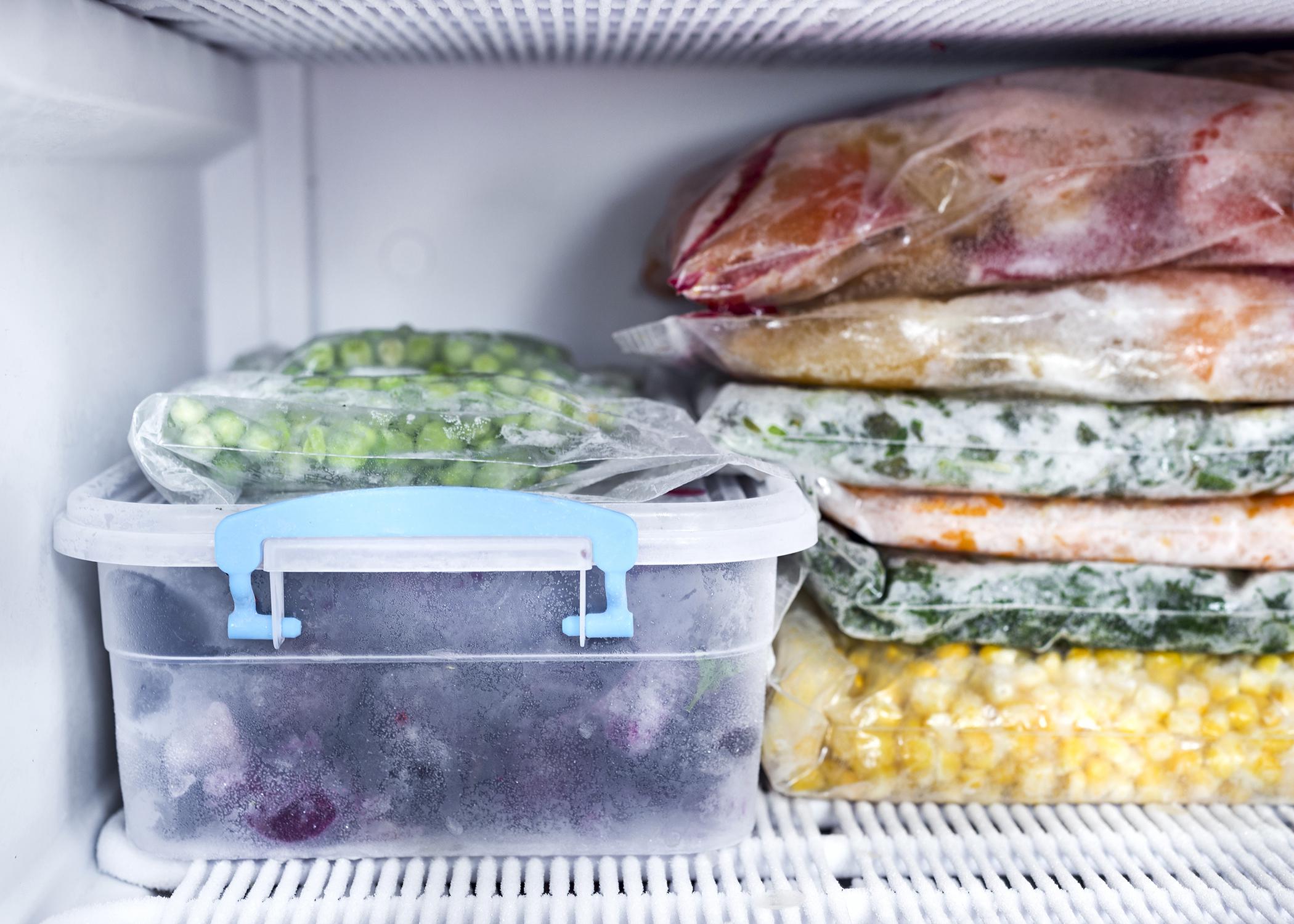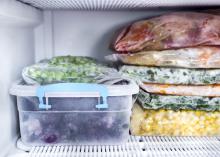Information Possibly Outdated
The information presented on this page was originally released on April 15, 2020. It may not be outdated, but please search our site for more current information. If you plan to quote or reference this information in a publication, please check with the Extension specialist or author before proceeding.
Get best quality, taste from frozen foods
RAYMOND, Miss. -- Home freezers provide a great way to keep more perishable items on hand as Mississippians shelter in place to reduce the spread of the new coronavirus.
Many foods can be frozen, even items families usually do not need to freeze, such as bread, said Natasha Haynes, a family and consumer science agent with the Mississippi State University Extension Service.
“You want to be sure to freeze items the right way to make sure they have the best flavor and texture when you get ready to eat them,” she said.
To freeze bread, place it in the freezer in its original packaging. If people live alone or don’t eat much bread, the loaf can be divided into smaller portions and frozen. Haynes said consumers should place the desired number of slices in a zip-top freezer bag and press out as much air as possible. Insert a straw and seal the bag around the straw. Remove the remaining air with the straw. Remove the straw, seal the bag, and freeze. Thaw bread on the counter.
Pamela Redwine, family and consumer science agent in Yalobusha County, shared some technical tips for freezing other foods.
Zip-top bags and rigid or glass containers are suitable for freezing all types of foods. Containers stack better and can make removing the food easier. Lids should fit snugly on rigid containers to preserve quality. If lids are loose, use freezer tape to secure them. Glass jars made for canning and freezing do not crack or break in the freezer unless overfilled.
“Always leave headspace, or room at the top of the jar or container, when freezing liquids,” Redwine said. “Wide-mouth jars are best because you can easily remove partially frozen contents. Standard canning jars with narrow mouths can be used, but you’ll need to leave extra headspace for liquids and wait until the contents are fully thawed to remove them. If you need to tape rigid container lids, use freezer tape. It is specially made to stick in freezing temperatures.”
Always label containers or bags with the name of the item and date. To help keep track of frozen foods, Redwine suggested keeping an inventory list near the freezer.
“When you put items in the freezer, write down the date, the food and the amount,” she said. “Try organizing foods by group in the freezer to make them easier to locate and arranging them so that the oldest foods are used first.”
Dating items is important because some items last longer than others. Cured meat, such as bacon, should be frozen for only 1 to 3 months because the high fat content in combination with the curing salts speeds up rancidity in the freezer.
Make sure items such as meats are packaged properly to avoid freezer burn. Wrap meats in plastic wrap and foil or in commercially available freezer paper to create a moisture-vapor barrier. Meats can be divided into meal-size portions or overwrapped in their original packaging.
For the freezer to work most efficiently, place only what will freeze in 24 hours and place it on the racks unstacked, leaving an inch of space around each item. Once it is completely frozen, it can be stacked.
“Freezing is efficient throughout the freezer, but things will freeze fastest on the top shelf,” Redwine said. “It’s best to read your appliance’s instruction manual to determine the best temperature setting for freezing on the top shelf or freezing many items at once. A general rule of thumb is to never freeze more than 3 pounds of food per cubic foot of freezer space at one time.”
Uncooked casseroles can be flash frozen to keep the casserole dish available for use. Line the dish with aluminum foil, and top that with a layer of plastic wrap. Leave enough of both aluminum foil and plastic wrap hanging over the edges of the dish to cover the frozen casserole later. Assemble the casserole and put it in the freezer. Once the casserole is frozen, remove it from the dish and cover it with the excess foil and plastic wrap. Then, the casserole-shaped food can be put back in the freezer.
Some items do not freeze well. They include cabbage, cucumbers, lettuce, meringue, mayonnaise, gelatin, cooked pasta, fruit jelly, sour cream, cooked Irish potatoes, milk-based sauces and fried foods. They are safe to eat, but they will not have the same texture as before they were frozen.









